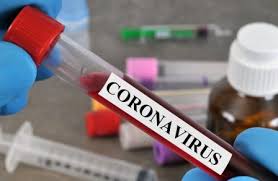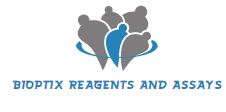How do tests that reveal the SARS-CoV-2 virus work?
Covid-19 diagnostic tests are an essential tool for monitoring the spread of the pandemic. The World Health Organization (WHO) has repeatedly asked health agencies to make coronavirus testing a top priority, but international response has been mixed.
Why does their use vary so much from one country to another?
Thanks to a combination of enabling regulations and logistical readiness, some countries, such as South Korea and Singapore, have been able to rapidly deploy massive test campaigns targeting thousands of individuals; but elsewhere, several countries have struggled to keep pace.
What are the new types of tests in preparation?
Meanwhile, in the United States, faced with delays of several weeks from hospitals and manufacturers, university research laboratories have developed their diagnostic tools to meet needs.
Test, instructions for use
Most Covid-19 tests are now performed on viral genetic material from samples from the nose or pharynx. They are based on a molecular biology tool designated by the acronym RT-PCR. PCR (for polymerase chain reaction) is a method of duplicating (or amplifying) a DNA sequence in very large numbers thanks to an enzyme, the polymerase. We can then analyze the DNA.
However, since the coronavirus genome is in the form of RNA, it must first be transformed into DNA, which another enzyme does, reverse transcriptase (RT).
Amplification starts from short sequences, added primers, complementary to the sequence to be duplicated. However, PCR can only detect the virus when it is present, and is of no use when the epidemic is resolved. What is more, it sometimes produces false positives when the reagents (in particular the primers and the products necessary for the duplication of DNA) are contaminated.
Laboratories around the world quickly adapted their RT-PCR tests to SARS-CoV-2, by designing appropriate primers, complementary to various fragments of the genetic sequence of the virus.
Which countries have been reactive?
Several countries have been able to test very large numbers of people (see figure below). South Korea reacted when the first cases appeared at the end of January by deploying large quantities of rapid tests and then monitoring those in contact with those who had tested positive. Regulations promulgated after the Middle East respiratory syndrome (MERS) epidemic in 2015 (with 186 cases and 35 deaths, South Korea was the second most affected country after Saudi Arabia which counted 688 cases and 282 deaths) allowed rapid release of a version of the WHO test, and four companies produced enough to test up to 10,000 people per day.
In this way, explains Angela Rasmussen of Columbia University in New York, the South Korean authorities were able to identify the slightly ill and asymptomatic people and prevent them from spreading the virus. “The country has not had to take the drastic social distancing measures as in other countries,” she added.
As for Singapore, the city-state developed a test as soon as the coronavirus appeared in China, explains Vernon Lee, of the Singapore Ministry of Health, and was very early in battle order to track down the cases. Hospital laboratories were quickly given the green light to use other authorized PCR tests, provided that the results of the first cohort were validated by a national laboratory. They also focused the tests on the most essential cases such as patients with pneumonia or people at high risk, for example elderly people.

-Singapore-
Essential logistics were installed after the appearance in 2003 of another coronavirus, the SARS-Cov: it notably provides sufficient capacities in laboratories, trained personnel, reagents…
“In Singapore, we are ready and have ” a medical and hospital system strengthened since the SARS episode. It’s not something we created because of the Covid-19, ”
Vernon Lee.
The latecomers
Health experts have criticized the United States for its slow response to the pandemic, in particular the low availability of tests and their slow implementation. According to specialists, these failures allowed the virus to spread without being detected and imposed strict social distancing measures to contain it.
US health officials have admitted their fault. At a congressional hearing on March 12, the director of the National Institute of Allergies and Infectious Diseases (NIAID), Anthony Fauci, said that the country “is unable” to test the population and was not in able to meet demand for testing.
Kenneth Bernard, a former adviser to several US presidents on biodefense, said a coordinator or a White House office responsible for responding to the pandemic could have facilitated communication between the agencies and drawn up a plan to intensify the tests. But the person who held the office left President Donald Trump’s National Security Council … in May 2018.
“We had a problem with the scale. It is one thing to do a benchmark test at the CDC (Center for Disease Control and Prevention), but another to do millions of them, “warns Kenneth Bernard.
Rigid regulations for new diagnostic tests have been an additional barrier. Initially, the only approved American test was created by the CDC, but it was found to be defective. And only public health services were allowed to use it. The Food and Drug Administration (FDA) did not relax these rules until the end of February and did not allow private labs to test until mid-March. It was only on the 21st that the US authorities authorized a rapid test that did not require samples to be sent to a laboratory. It should be ready soon.
With the federal response long overdue, the virology laboratories at the University of Washington in Seattle organized the first major national testing operation. The researchers adapted the WHO protocol to work with the reagents and platforms they had on hand. Dozens of other laboratories and research consortia have followed suit.
“The federal government made the decision to severely limit access [to the tests] at first,” said Joshua Sharfstein, a former FDA official. “If you could go back and tell the FDA in mid-January that you’re really going to need a million tests soon enough, they would have chosen a different strategy. “
What about serological tests?
One of the main goals is to develop a serological test, which is one that can detect past viral infections by looking for antibodies that a formerly infected person has produced to fight the virus. Such a test would reveal the extent of viral spread in a population and would provide useful public health information.

“For the moment, it is clear that we are only seeing the tip of the iceberg: patients so severely affected that they must be hospitalized or even receive intensive care there,” explains Robert Garry, virologist at Tulane University, in New Orleans, Louisiana. “What is worrying is that there are a lot of patients with little or even asymptomatic disease outside. “
Several groups, including that of Robert Garry, are working on carrying out such a serological test. Another team, including researchers from Icahn School of Medicine at Mount Sinai Hospital in New York, developed one that she describes in a prepublication, not peer reviewed, posted on medRxiv on March 18. “We don’t see any obstacle to carrying out these tests, only a few adjustments,” says Robert Garry.

A team in Singapore used serological tests to trace contacts of patients, but at the time, the method used had not been validated for clinical use. “We think this is the first time in the world that this type of testing has been used in this context,” said Danielle Anderson, virologist at the faculty of medicine at Duke and Singapore Universities, in Singapore, during a press conference in February.
Make way for innovation
Research groups led by two of CRISPR’s leading specialists, the tool that makes it easy to modify an organism’s genome, are each working on tests that leverage this gene editing technique to improve testing.
First, at the University of Washington, virologist Keith Jerome and his colleagues improved the SHERLOCK test (for specific high sensitivity enzymatic reporter unlocking) developed by Feng Zhang at the Massachusetts Institute of Technology. The latter said he had sent some 1,600 test kits to ten laboratories around the world.
Next, Mammoth Biosciences, a California-based biotechnology company co-founded by Jennifer Doudna of the University of California at Berkeley, is working on another CRISPR-based method called DETECTR to detect SARS-CoV-2.
Both techniques use CRISPR’s ability to recognize and cut specific genetic sequences. Here, he also cuts a reporter molecule added to the reaction, which relatively quickly reveals the presence of viral genetic material.
“Whenever we are faced with an epidemic, we are late because we do not have rapid diagnostic tools to detect and identify the new organism in question,” said Charles Chiu of the University of California at San Francisco, who works with Mammoth Biosciences. “The main advantages of CRISPR are its specificity and speed, a test which can be carried out in 5 to 10 minutes. “
Robert Garry, at Tulane, is optimistic about such advances. “It is a powerful technique. I’ve seen it work with the Zika virus and a few other viruses, “he says. “If anyone can find a way to lessen the impact of the Covid-19, let’s do it. “
